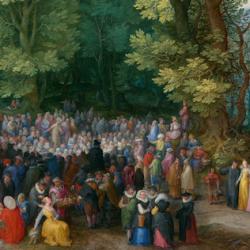Since Mauss re-discovered the truism that there ain’t no such thing as a free gift, philosophers and theologians have fretted over the broken promise of the “pure gift” – a no-strings gift, a gift without expectation of return. It’s a Kantian deformation of an evangelical hope; but it’s bound to be frustrated, since the evangel is essential to the hope. For the likes of Derrida, the pure gift is a horizon never reached, an unrealizable promise that is as necessary to our lives and actions as the Messianic that never arrives.
Gregory Walter argues in Being Promised that there is a git that eludes the Derridean problematic: the gift of the promise.
A promise is “a kind of gift – one that is doubled and extended. This means that a promise consists of two moments of giving, both the pledge and then the actual giving of the promise, with the doubled gift extended over time in between the two.” On the one hand, “the offering of a promise bears a family resemblance to what anthropologists call gift-exchange or gift-economics.” On the other hand, “promise, theologically considered, escapes or resolves many of the problems that trouble the gift’s ingress into theology” (6).
Especially the problem of reciprocity: “The promise is a pure gift that enables reciprocity, in a way, bringing together disparate types of gifts” (6). Geometrically, the promise combines the features of the circle (reciprocity and payback) and the vector (the pure gift that never returns): “A promise might seem to be circular . . . since it involves the promise of one to another, the responsibility and credibility of the one to the other, and so a relationship or reciprocity and the circle.”
Yet, unlike the closed world of circular gift-exchange, the promise is “surprising, chancy, and seems to be unilateral in direction.” In short, “the promise is both circular and a victory. It brings Odysseus and Abraham into one figure. It points outward, as a vector, while returning.” Combining circle and vector, it also integrates eros and agape. This, “Abraham . . . may be said to leave home to find it ever anew elsewhere” (16).











